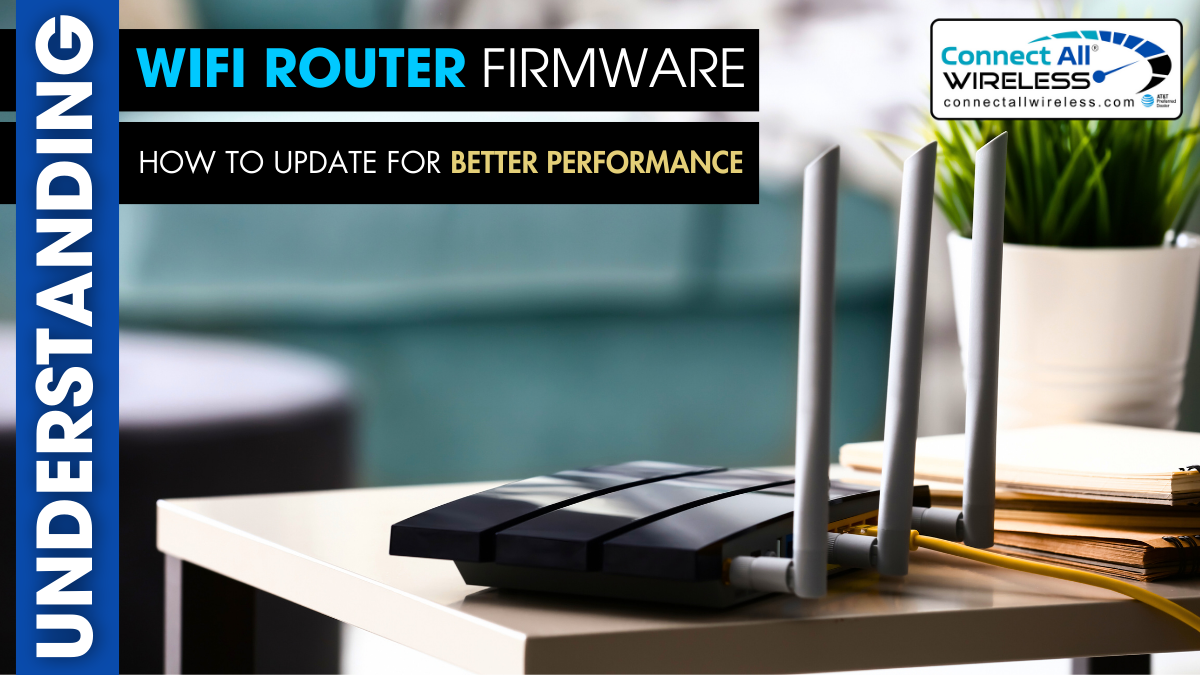Understanding WiFi Router Firmware: How to Update for Better Performance
May 8, 2024In the world of networking, the firmware of a WiFi router plays a crucial role in its functionality and performance. It serves as the operating system of the router, governing how it manages data, communicates with devices, and maintains security protocols. Despite its significance, firmware is often overlooked by users who may not realize its impact on their network’s performance. In this article, we will delve into the importance of understanding WiFi router firmware and provide a comprehensive guide on how to update it for better performance.
What is WiFi Router Firmware?
Before we discuss the importance of firmware updates, let’s first understand what firmware is and how it differs from hardware and software. Hardware refers to the physical components of a device, such as the router’s circuitry and antennas. Software, on the other hand, refers to the applications and programs that run on the device, including the router’s operating system.
Firmware bridges the gap between hardware and software. It is a specialized type of software that is embedded into the hardware of the router. Think of it as the router’s brain—it provides the necessary instructions for the hardware to function and interacts with the software to execute commands.
The Importance of Firmware Updates
Firmware updates are essential for maintaining the optimal performance and security of your WiFi router. Just like any other software, firmware is susceptible to bugs, vulnerabilities, and performance issues. Manufacturers regularly release firmware updates to address these issues, enhance features, and improve compatibility with new devices and technologies.
Here are some key reasons why firmware updates are important:
- Security: Outdated firmware may contain security vulnerabilities that could be exploited by hackers to gain unauthorized access to your network or compromise your data. Firmware updates often include patches for known vulnerabilities, strengthening your router’s defenses against cyber threats.
- Performance: Firmware updates may include optimizations and improvements that enhance the overall performance of your router. These updates can result in faster data transfer speeds, reduced latency, and improved stability, providing a better user experience for everyone on your network.
- Compatibility: As new devices and technologies emerge, firmware updates ensure that your router remains compatible with the latest hardware and software standards. This is particularly important for maintaining seamless connectivity and interoperability with a wide range of devices, including smartphones, laptops, smart home appliances, and IoT devices.
- Bug Fixes: Like any software, firmware can contain bugs or glitches that affect the router’s functionality. Firmware updates address these issues by providing bug fixes and stability improvements, minimizing the risk of crashes or performance issues.
How to Update WiFi Router Firmware
Now that we understand the importance of firmware updates, let’s explore how to update the firmware of your WiFi router. While the specific steps may vary depending on the manufacturer and model of your router, the general process is similar across most devices.
Step 1: Check for Firmware Updates
The first step is to check if there are any available firmware updates for your router. Most manufacturers provide firmware updates on their official websites, along with instructions on how to download and install them. You can also check for updates directly from the router’s administration interface, usually accessible through a web browser.
Step 2: Download the Firmware Update
Once you’ve identified the latest firmware version for your router, download the firmware file to your computer or mobile device. Make sure to download the correct firmware version for your router model, as installing the wrong firmware can cause irreversible damage to your device.
Step 3: Backup Your Router Settings
Before proceeding with the firmware update, it’s a good idea to backup your router’s settings. This ensures that you can easily restore your configuration in case anything goes wrong during the update process. Most routers have a built-in option to backup and restore settings through the administration interface.
Step 4: Install the Firmware Update
To install the firmware update, access your router’s administration interface through a web browser and navigate to the firmware update section. Follow the on-screen instructions to upload the firmware file that you downloaded earlier. The router will then proceed to install the update, which may take a few minutes to complete.
Step 5: Reboot Your Router
Once the firmware update is installed, reboot your router to apply the changes. This will ensure that the updated firmware is properly initialized and that any new features or improvements are activated.
Step 6: Verify the Update
After rebooting your router, log back into the administration interface and verify that the firmware update was successful. Check the firmware version to confirm that it matches the latest version available from the manufacturer. You can also test the router’s performance to ensure that the update has improved its functionality.
Conclusion:
In conclusion, grasping the significance of WiFi router firmware updates is pivotal for optimizing network performance and security. By regularly updating firmware, users can fortify their routers against security threats, enhance overall performance, and ensure compatibility with emerging technologies. Keeping firmware up-to-date is akin to fortifying the digital backbone of your network, safeguarding against vulnerabilities and providing a smoother, more reliable online experience.
Moreover, in regions like Michigan where internet service quality is crucial, maintaining top-tier router performance is even more vital. Partnering with the best WiFi internet service providers in Michigan ensures a seamless online experience, but without a well-maintained router, users may not fully leverage the service’s potential. By understanding and prioritizing firmware updates, Michigan residents can maximize their internet experience, complementing the efforts of their chosen providers. Ultimately, it’s the synergy between cutting-edge service and optimized hardware that unlocks the full potential of modern connectivity. So, take charge of your router’s firmware updates today, and elevate your internet experience to new heights.


